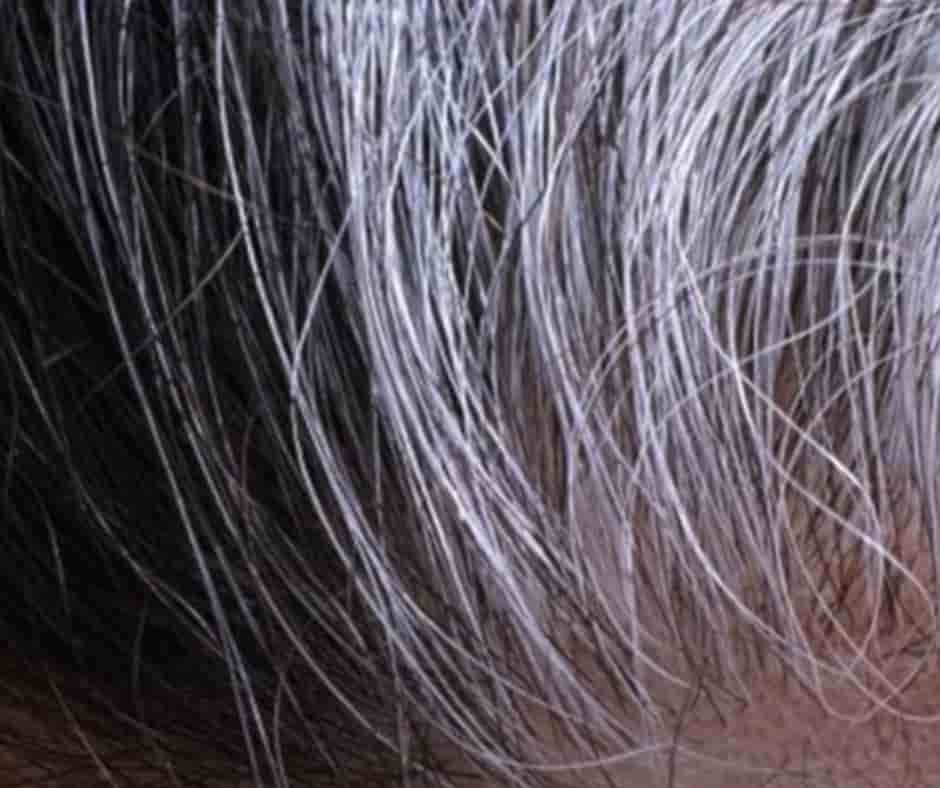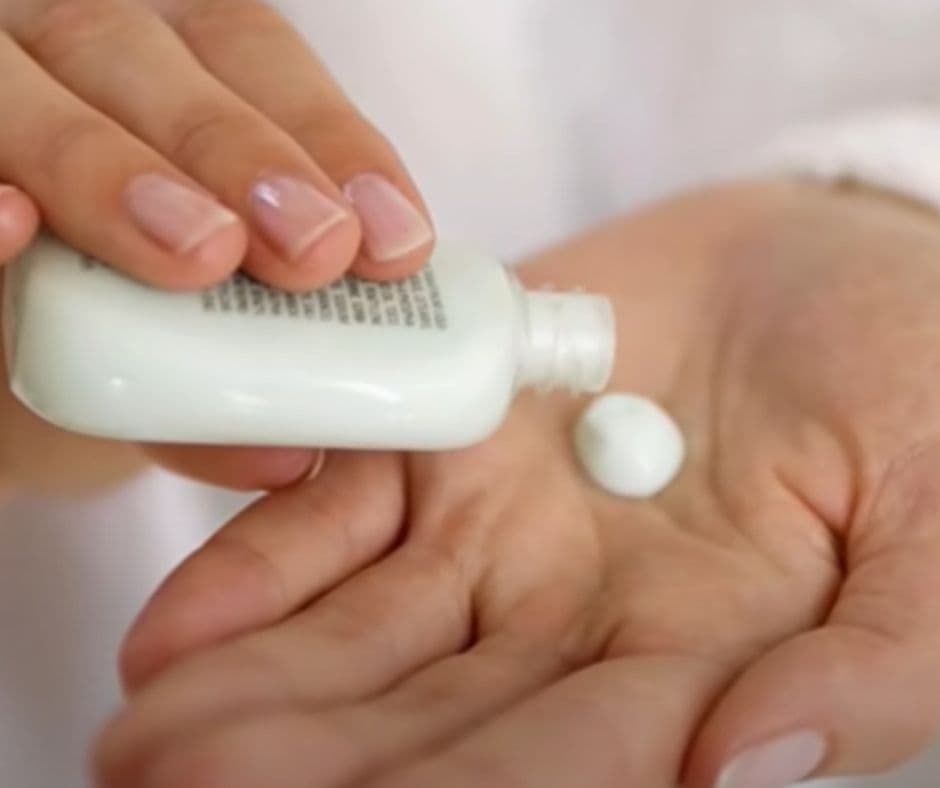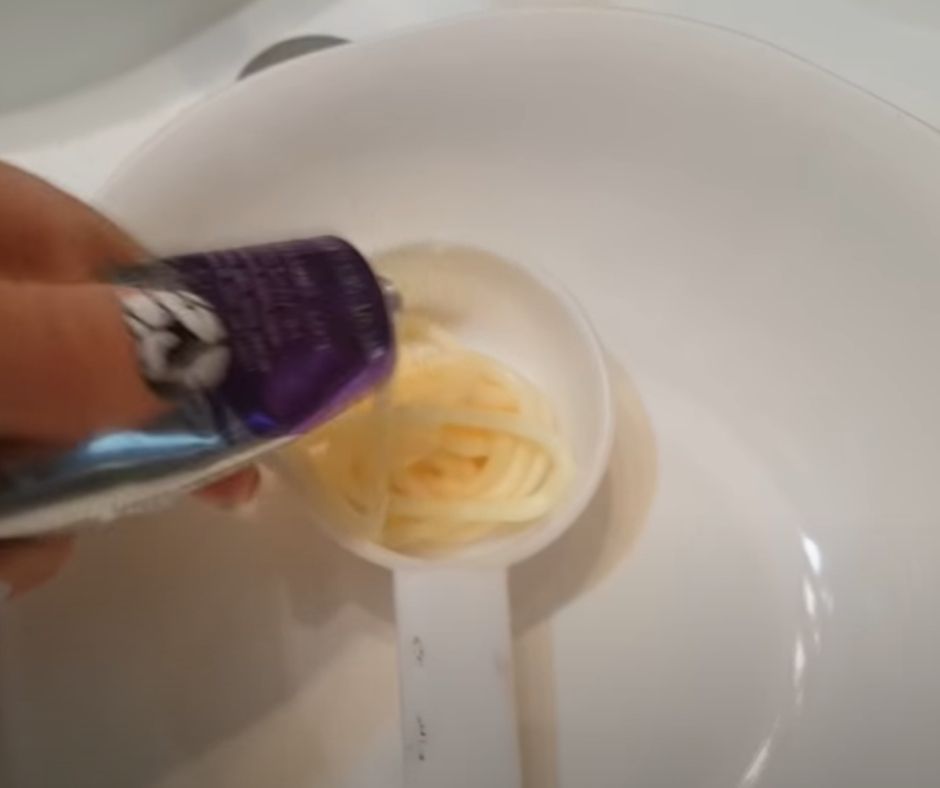How To Pretreat Gray Hair Before Coloring

Grey hair is devoid of the pigment seen in naturally colored hair. Lack of color pigmentation is mainly caused by aging (but can also be caused by stress), and it not only changes the color of the hair but also changes the texture and coarseness of the hair cuticle. Grey hair has a thicker, ‘tightening’ layered cuticle, making it more difficult for color to infiltrate and deposit color in the cuticle.
Gray hair is a lot more sensitive than hair that isn’t gray; therefore you should always take additional care of it before dying it. It won’t matter if you take a few more steps.
You want to hide your grey hair with the color, but it contains chemicals and ammonia.
Some people’s hair is resistant to coloring, which can be solved by doubling the color application on tough grey roots and increasing the developing period by ten minutes.
Pre-softening is done before a color process to provide complete coverage on resistant gray hair regrowth.
The color developer, composed of hydrogen peroxide, is applied to the regrowth area to “open” or “lift” the hair’s cuticle layer.
When using a mixed color formula, a raised cuticle layer will allow for better color penetration.
Pre-softening is a simple procedure performed before coloring to help prepare your hair for color absorption. Pre-softening will soften those harsher, thicker, coarser greys, as the name implies. The idea is to use a pre-softening technique to open up and lift the hair cuticle before coloring so that the hair is better able to absorb the color and give you the grey coverage and color you desire.
You can use a moist cloth or a face washer to wipe away the developer from your roots before continuing your color application. Wear a shower cap and double-apply color to your roots throughout the color processing period, and use the slightly longer color processing time for grey coverage.
Pre-pigmenting is accomplished by combining the color cream with a little warm water and applying it to your hair’s grey strands. When dying your hair, you don’t mix the color cream from the tube with the developer. You don’t have to be accurate, but you can use a kitchen scale to weigh the same amount of color cream and warm water.
Apply the mixture to the stubborn strands, such as the front hairline or natural section of your hair. Make use of a brush or a comb to comb it through your hair. Ensure that the hair is completely wet. Allow 20 minutes for it to absorb.
Then, instead of washing it off, apply the tint with the developer as usual. You might increase the waiting period by 10 minutes, allowing the dye to rest for 45 minutes instead of 35. The grey hair will have a little more time to absorb the dye this way. By pre-pigmenting, you add a small amount of extra pigment to ensure that the color lasts longer.
Do you need to fill gray hair before coloring?

If you have more than 25% grey hair, especially thick, coarse, and black hair, we recommend incorporating some base shade into your mix.
Should I pretreat hair before coloring?

Ensuring the hair you’re dying of is in good condition is the key to perfect hair color. Treat your hair gently to maintain the color vibrant for as long as possible, use the right hair styling products and shampoos, and use a hair treatment at least once a month.
Do a hot oil hair treatment at least three days before coloring to condition your hair properly and prepare your hair strands to take on your hair color.
– Don’t wash your hair the day of or right before coloring it (do it the day after your hot oil treatment) to avoid stripping your hair of its natural oils. They will assist you in achieving a more consistent result.
When you wash your hair, use a detoxifying or clarifying shampoo to get rid of product buildup and ensure squeaky clean strands. Also, don’t bother with the conditioner.
– Select the appropriate hair color. Choosing the right hair color for you, whether you’re dyeing your hair at home or in a professional setting, will make a huge difference in the result. Consider your natural hair color as a starting point and don’t go more than two shades darker or lighter to ensure that your hair color complements your skin tone.
Suppose you want anything completely different from your natural hair color or something more involved, such as highlights or two-tone hair. In that case, you should seek expert advice to avoid any hair disasters.
– If you’re coloring your hair at home, keep in mind that the color on the box isn’t always the color you’ll get and that you should always follow the manufacturer’s directions to the letter. It’s also good to do a strand test first to ensure that you’re not allergic to any of the dye’s chemicals and that you’ll like the color.
Why does gray hair not take color?
Pre-color treatments are used to remove unwanted buildup and discoloration and protect the scalp from irritation and reduce chemical damage. Pre-color treatments ensure evenly deposited color, increased color retention, and increased vibrancy by producing an appropriate substrate for color application.
Sometimes, the hair has become so clogged with products that color molecules can’t penetrate the hair cuticle. Hairstyle product residues and hard water minerals are two of the most typical factors. It can also play a role if the customer is taking drugs.
Another reason is that grey hair is exceedingly difficult to manage. This means that grey hair has more cuticle layers than colored hair, and those cuticle layers are packed down quite tightly.
Because of its texture, grey hair is more resistant to color than younger hair, according to hair biology specialists and styling experts alike. Because there are fewer natural oils in older hair than in younger hair, it has a coarser surface that rejects color, especially around the roots.
Our hair’s natural oil production decreases as we age. Our hair becomes coarser and our scalp becomes drier. This coarse, dry hair is extremely color resistant.
Gray hair can have its mind, and it normally doesn’t work with us. If it appears that dying your hair properly becomes more difficult over time, it is because it does.
What level developer covers gray?

In beauty school, they teach you how to use a 10 Vol developer for level-on-level coloring.
In cases where there are a lot of grey hairs to cover, this does not work.
It helps to use 20 Vol or even 30 Vol because it opens the cuticle more and allows color and developer to penetrate easier.
For the majority of grey hair coverage cases, we recommend using a 20 Vol developer.
You can also use 30 Vol if the hair is extremely thick and resistant, or if you want to lift the base by two or three levels.
However, apply last to the root area in such instances, as 30 Vol processes exceptionally quickly there.
The developer activates and raises those exceptionally tight cuticles a little, making them more receptive to the color, allowing the color to do its work and enter the cuticle and deposit color successfully.
How can I cover grey hair without dying it?
Hair graying is a natural aspect of the aging process. Although gray hair is prevalent and unavoidable, people frequently use a variety of techniques to conceal it. Synthetic hair colors are most typically used to conceal graying hair.
While hair coloring is popular among individuals of all ages and is not limited to gray hair, applying it to cover gray hair necessitates frequent treatments. Synthetic hair colors are effective at hiding graying, but they are chemically based, which can cause serious harm to your hair.
Here are some low-cost, safe, and temporary procedures and equipment to hide grey hair without synthetic dyes.
- Use temporary powders to start.
You can buy a variety of temporary powders designed to camouflage gray roots. Gray roots can be quickly and easily removed with the help of temporary powders. They’re available in a range of hues, so you’ll be able to choose one that matches your hair.
These powders are water and sweat-resistant, and they will usually last until you shampoo your hair. You may keep these powders in your handbag or car and use them whenever you need to touch them up.
- Use it to style your hair.
Apply the powder to your scalp and pull your hair taut from the roots. Begin at the center and work your way outward, dabbing the powder on visible roots. You can also use a similar-colored hairspray to cover your bald patches before applying the powder to help it stay on your scalp longer.
- If necessary, repeat until the roots are gone.
- After a minute of application, brush your hair.
- Excess products can be removed by lightly blow-drying your hair or using the wide end of the applicator brush.
- Use a root concealer to hide your blemishes.
You can also use root concealer sprays instead of temporary powders. Touch-up sprays, as they’re often known, are widely available at drugstores and beauty stores.
Root concealer sprays are available in a range of colors; choose one that matches your hair color. These sprays might help you hide your gray hair until you wash and shampoo your hair again.
How to use: Read and follow the product’s instructions. In general, give the bottle a good shake before spraying the product on your hair from 6–12 inches away. If you use various products, it will make your hair look moist and strange.
- use the airbrush technique
Airbrushing is a popular painting, cosmetics, and even root touch-up method. You may obtain a smooth, flawless look with less product with this advanced approach, which other products may not be able to provide.
When airbrushing, a liquid product is loaded into an air gun and sprayed on the target area. Water-based airbrushes are recommended for hair, while silicone-based brushes can cause hair damage.
How to use: This procedure necessitates some dexterity. Examine the instructions thoroughly and, if necessary, seek the advice of a professional or a friend.
Select an airbrush hair product that matches the color of your hair.
Spray the product on your roots while holding the airbrush 2 inches from your scalp. This should be done on dry hair.
By airbrushing in light, even strokes with a continuous movement, apply a single coat of product to the entire scalp.
- Herbs can be used on hair.
The most frequent method of concealing gray hair is to color it. On the other hand, synthetic dyes are loaded with chemicals that can harm your hair in the long run.
Instead, you can conceal your gray hair with a variety of natural colors. While these colors are not as efficient as synthetic dyes, they give a safe and temporary alternative.
- Jatamansi
Jatamansi is a powerful herb that is used to darken or blacken hair. (4) You can use jatamansi powder if you have dark hair that has begun to gray.
- To make a paste, combine the powder with water, olive oil, or Moroccan argan oil.
- Apply the paste to damp hair that has been shampooed.
- After an hour, rinse it out and condition your hair.
- Flowers of the Hibiscus species
Hibiscus flowers can be used to color your hair if you have read or crimson hair. These blossoms also give your hair a lustrous sheen.
- In a pot of boiling water, add the petals of hibiscus flowers.
- Remove the water from the heat once it has turned a dark hue, and steep the mixture for 10–15 minutes.
- After the liquid has cooled, strain it into a spray bottle.
- Shampoo your hair and softly mist it with the solution. To achieve even distribution, comb your hair.
- After about an hour, rinse and condition your hair.
- Sage
Sage can be used to color graying hair by brunettes.
- Allow 1 cup of dried sage to steep in 1 liter of boiling water for half an hour. You can boil it for longer if you want a darker color.
- Rinse your hair with the cooled sage water after washing it.
- A shower hat or a plastic bag should be used to cover your hair.
- Rinse and condition your hair after 40 minutes.
How to pre soften the hair before coloring
Directly overtop, apply your color formula. The cuticle will be lifted by peroxide, while the color will be driven inside by ammonia or its replacements. Consider it this way: Is the cuticle refusing to open? Is it possible that the color isn’t getting in? Pre-soften with color, and your formula will have more pigment molecules in general, as well as deeper pigment penetration. Let us not forget that the developer can dilute.
To determine your formula, first, determine the true proportion of grey hair present. . In formulating, many people find that dropping a half to a full level allows for greater pigment weight and a better color deposit.
1. To figure out how many Hypercolor drops you’ll need, first figure out the formula (Oway Hcolor + Hcatalyst). 30g Hcolor + 30g Hcatalyst = 60g Total Mixture, for example.
After that, double the total amount of the mixture by 6. This will provide you with the correct number of Oway Hypercolor Drops.
60g Total Mixture / 6 = 10 Hypercolor Drops as an example
2. Fill the dish with Oway Hcolor. Then, before adding the Oway Hcatalyst, combine it with Oway Hypercolor Drops.
3. After that, you must install Oway Hcatalyst Developer.
PS: Massage the bag before adding the Hcatalyst to the bowl to ensure the developer’s rich essential oils and butter stay integrated.
4. Using a whisk, fully combine the entire formula.
5. Divide the hair into sections and apply the Oway Hcolor formula to the new hair growth.
PS: Apply the product to narrow portions to ensure appropriate saturation.
6. Make 12-15 holes in a plastic cap and cover the hair with it.
7. Dry the hair with a heated blow dryer. Allow 15 minutes for cooling, then another 5 minutes.
PS: For clients with no grey, run their hair through a warm dryer for 10 minutes, then cool for 5 minutes.
30 to 45 minutes
During the pre-softening phase, you can use your hairdryer to provide heat to your roots for a few minutes, which will soften and raise the cuticle to allow color absorption.
Conclusion
It’s fine if your gray hair doesn’t respond nicely to color. The color, believe it or not, isn’t good for your hair in the first place. It can make it even more brittle than before, causing hair loss to happen faster than it would otherwise.
Make-up, herbal rinses, and temporary powders are all options for covering gray hair using simple, temporary at-home procedures.
These techniques not only help you go longer between salon visits, but they’re also generally kind to your hair.
